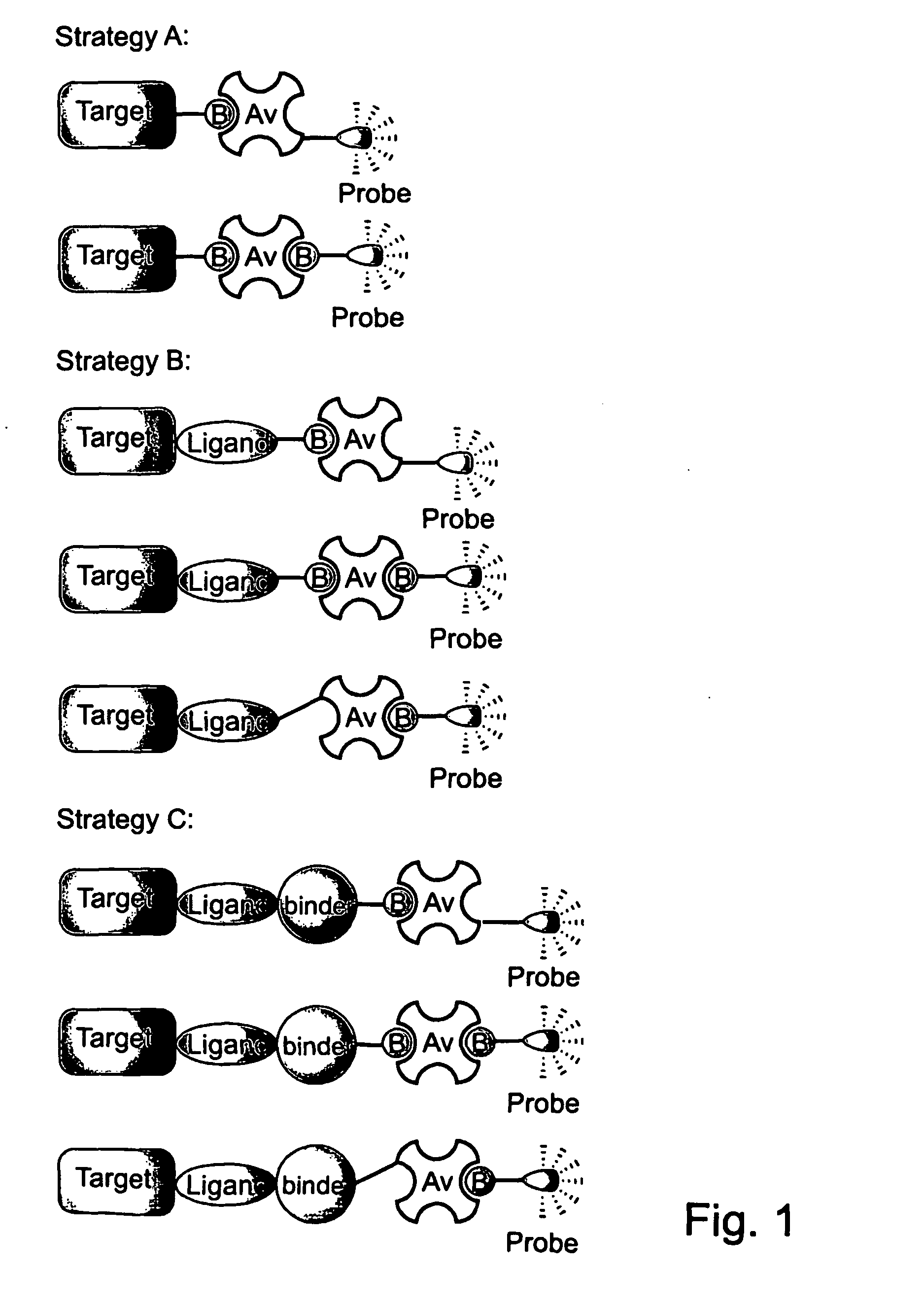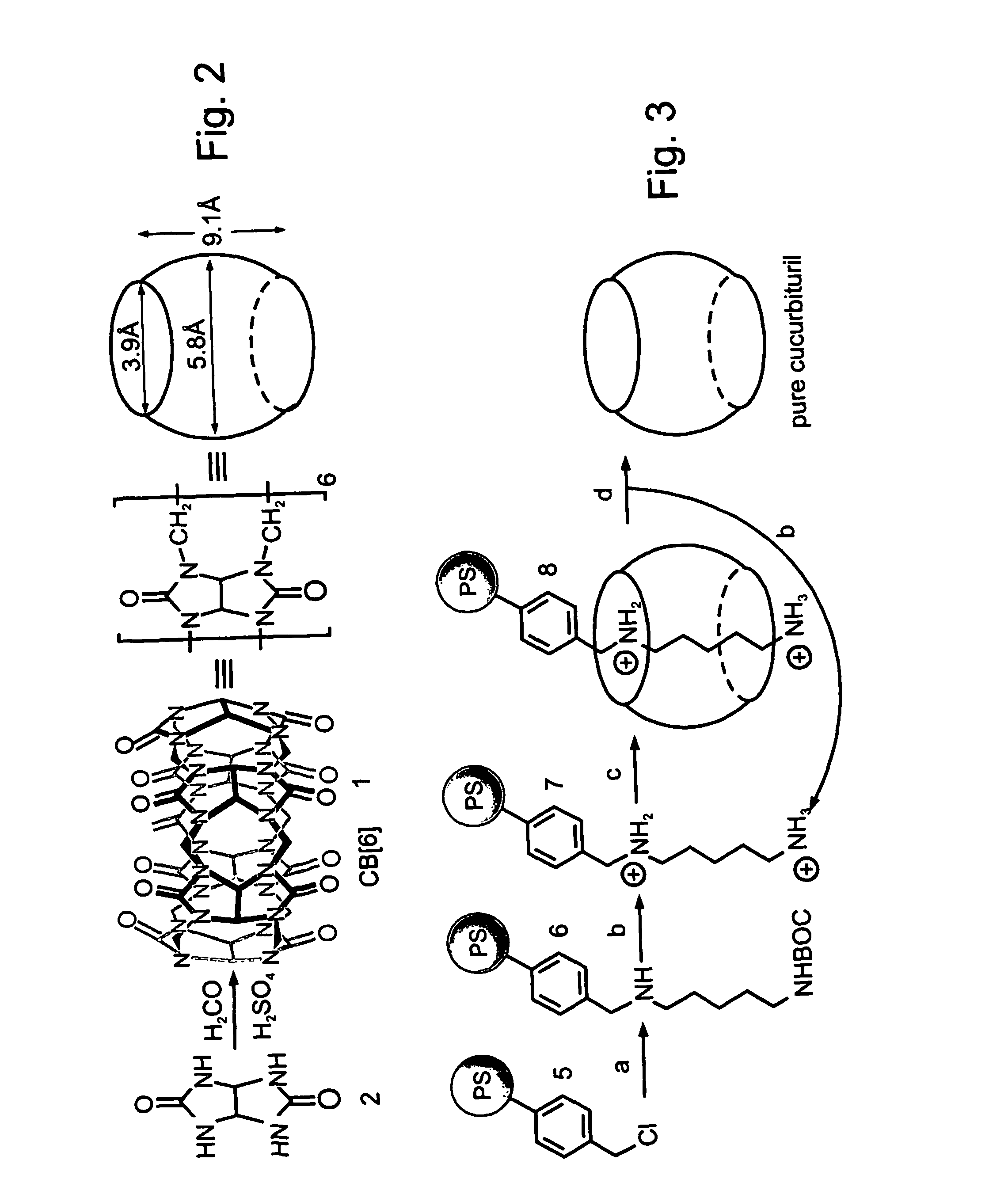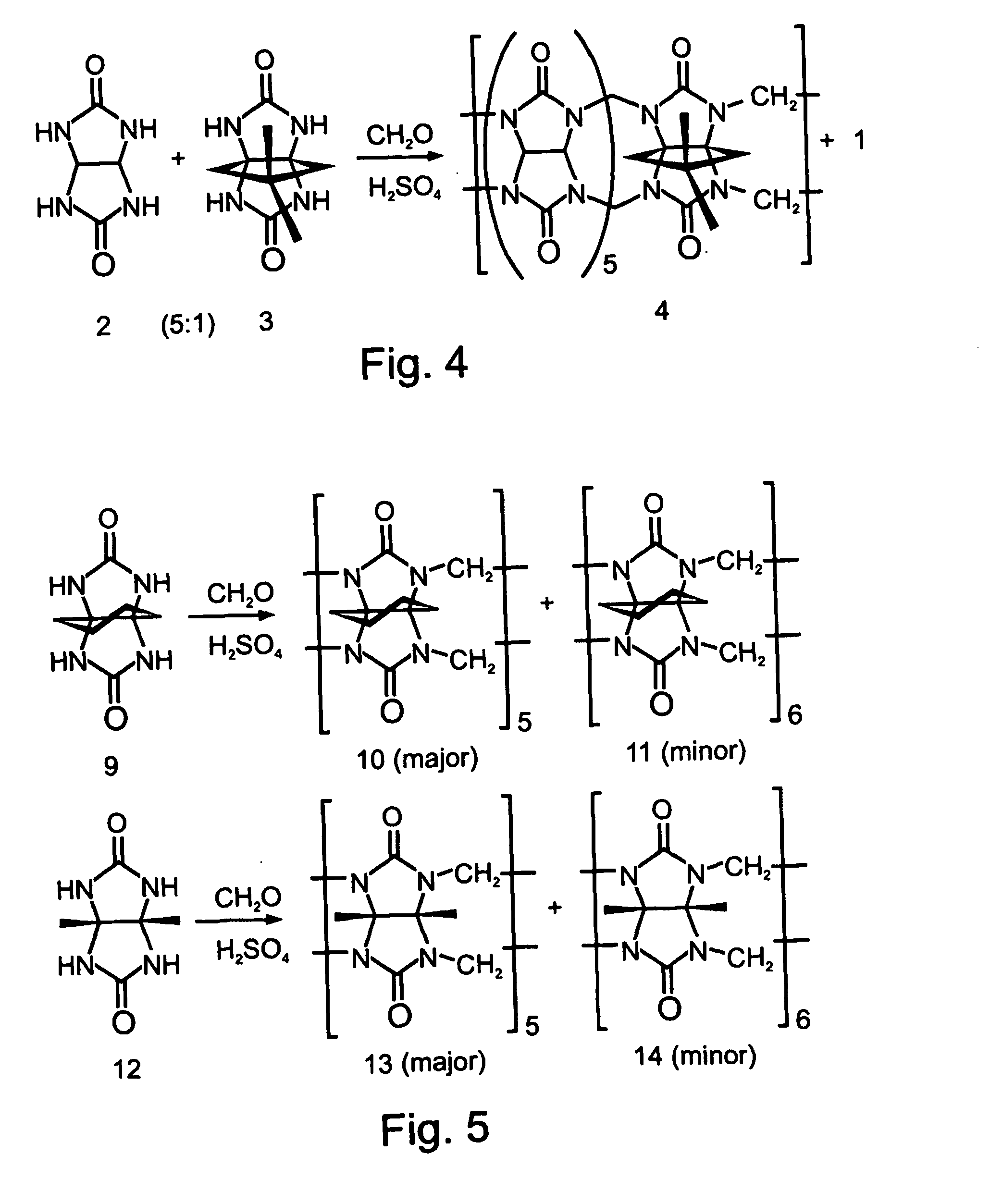Novel synthetic binding pairs and uses thereof
a synthetic binding and synthetic technology, applied in the field of new synthetic binding pairs, can solve the problems of loss of resolution in separation techniques, dissociation of affinity pairs, analytical gels, etc., and achieve the effect of efficiently prepared and utilized
- Summary
- Abstract
- Description
- Claims
- Application Information
AI Technical Summary
Benefits of technology
Problems solved by technology
Method used
Image
Examples
example 1
Design and Preparation of an Affinity Chromatography Purification Strategy
[0336] As is detailed hereinabove, the strong binding interactions between CB[n]s and protonated amines or diamines have been harnessed for designing an affinity chromatography purification strategy. To that end, polymer-bound polyamines were prepared and employed as follows, taking advantage of the fact that their binding affinities to cucurbiturils are solvent- and pH-dependent.
Preparation of Highly-Dense Chloromethylated Polystyrene Beads
[0337] Chloromethylated polystyrene beads (Merrifield resins) having a higher density of functional groups, as compared with commercially available resins, were prepared as follows:
[0338] A resin (8 grams) of cross-linked polystyrene beads (Rohm & Haas, amberlite XE-305, 2% divinylbenzene, 20-50 mesh, average pore size 1400 angstroms, surface area 48 m2 / gram), was mixed with chloromethylmethyl ether (75 ml), tetrachlorostannane (2.4 ml, prepared according to Trost and K...
example 2
Affinity Purification of Dimethylcyclopentano-CB
[0345] Dimethylcyclopentano-CB (FIG. 4, Compound 3) was synthesized according to the procedures described by Day et al. (J. Org. Chem. 2001, 66, 8094) and Isobe et al. (Org. Lett. 2002, 4, 1287), by heating at 90° C. for 24 hours, a 5:1 mixture of glycoluril (Compound 2) and dimethylcyclopentano-glycoluril (FIG. 4, Compound 3), and formaldehyde in the presence of concentrated sulfuric acid (FIG. 4), so as to give the desired cucurbituril product in 30% yield. The water-soluble fraction (740 mg) of the crude, heterogeneous mixture (1.3 gram) was dissolved in neutral water (50 ml) and passed through a column loaded with the protonated aminated resin prepared as described above, at a flow rate of 0.5 ml / minute (of the heterogeneous mixture in water). The column was then washed sequentially with water, methanol, CH2Cl2, and again with methanol. Removal of the solvent from the combined eluent afforded a solid residue (510 mg). This residue...
example 3
Affinity Separation of a Thermodynamically Unfavorable CB
[0350] The use of the above described affinity chromatography technique for isolating rare CB derivatives, which are highly beneficial in various applications, as is detailed hereinabove, was evaluated. The rare cucurbituril derivative hexacyclohexano-CB[6] was chosen as a first representative example.
[0351] Thus, a mixture of pentacyclohexano-CB[5] (FIG. 5, Compound 10) and hexacyclohexano-CB[6] (FIG. 5, Compound 11) was prepared by reacting cyclohexanoglycoluril (FIG. 5, Compound 9) with formaldehyde, according to the procedure described by Zhao, J et al. (Angew. Chem. Int. Ed. 2001, 40, 4233). Compound 10 and Compound 11 were obtained in 16% and 2% yield, respectively.
[0352] Using the affinity chromatography described above, the minor CB[6] product, Compound 11, was rapidly separated from the crude reaction mixture. The NMR spectra of the mixture before (data not shown) and after (FIG. 16) the separation indicated that p...
PUM
| Property | Measurement | Unit |
|---|---|---|
| dissociation constant | aaaaa | aaaaa |
| dissociation constant | aaaaa | aaaaa |
| dissociation constant | aaaaa | aaaaa |
Abstract
Description
Claims
Application Information
 Login to View More
Login to View More - R&D
- Intellectual Property
- Life Sciences
- Materials
- Tech Scout
- Unparalleled Data Quality
- Higher Quality Content
- 60% Fewer Hallucinations
Browse by: Latest US Patents, China's latest patents, Technical Efficacy Thesaurus, Application Domain, Technology Topic, Popular Technical Reports.
© 2025 PatSnap. All rights reserved.Legal|Privacy policy|Modern Slavery Act Transparency Statement|Sitemap|About US| Contact US: help@patsnap.com



